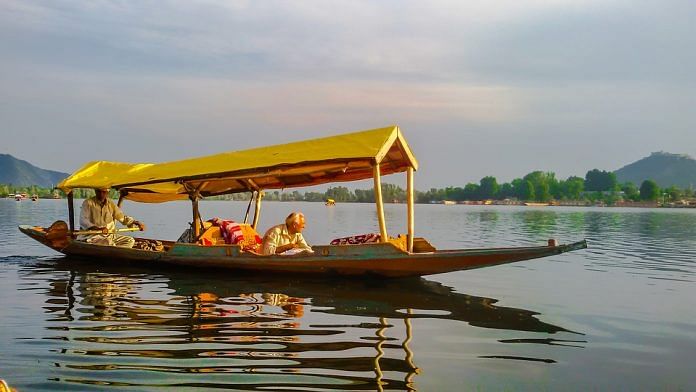With the number of visitors to Jammu and Kashmir falling severely, the recent killing of tourist Thirumani may have derailed the state’s most crucial industry.
New Delhi: The killing of 22-year-old Chennai tourist R. Thirumani at the hands of a stone-pelting mob shocked many within and outside Jammu and Kashmir, given that it was the first death of a tourist (non-pilgrim) ever since terror cast its shadows over the valley. Though many in the group Thirumani was travelling with refused to leave Kashmir, the continuing violence and bloodshed has hit tourist numbers significantly.
It’s almost the beginning of summer and the shikaras (Kashmiri boats) have started dotting Srinagar’s Dal Lake with tourists getting the perfect selfie. However, this year you see only a handful.
The numbers were robust in 2015 with nearly 92 lakh visitors to the state. The figure fell to 73 lakh in 2017 as per the economic survey tabled by the government in the state assembly last year. Of the 73 lakh, nearly 60 lakh were pilgrims to Vaishno Devi in Jammu and the Amarnath Yatra, with the rest, a paltry number of 13 lakh tourists (Indians and foreigners), actually visiting the valley.
Aziz Ahmed, a tour operator and shikara owner who has been handling big tourist groups for eight years, said, “We had a very good season in 2014 and 2015. But after the unrest in 2016 following Burhan Wani’s death the numbers have reduced. We still had some hope earlier this year when we got some major bookings, but after the recent incidents of violence things are only going south.”
Almost like a desperate assurance, he added, “80 per cent of Kashmiris are very nice people and you will be very safe. Don’t go by what you hear on TV.”
This was perhaps the advice taken by Sudipta and Abhishek Das who travelled all the way from Kolkata and were happy to prove the naysayers wrong. “We are enjoying the beauty of Kashmir and the people are wonderful.”
N. Krupal from Bengaluru said that even though he had fears before landing in the valley, the love and affection from the locals made him and his family feel safe.
“We had heard that the situation is really bad but we haven’t experienced anything as such,” he said.
However, the valley’s tour operators as well as the state’s tourism department are aware that voices like Krupal’s are few and far between. The Travel Agents Association Kashmir (TAAK) feels the death of Thirumani could be the last nail in Kashmir tourism coffin and massive efforts would be required to resuscitate the industry.
Given that tourism contributes 8 per cent to the state’s gross domestic product, its importance cannot be overstated. More than anything, the state desperately needs the optics of tourist-full flights landing in the valley, or the famous Mughal gardens full of visitors, and streets of the valley bustling with energy.
In the words of chief minister Mehbooba Mufti, tourism is the ‘magical medicine’ that can provide the healing touch to the wounds of the people.






